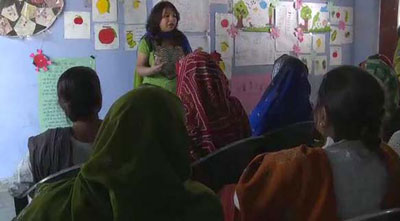2 Dealing with challenges
School leaders and teachers often face challenges when making changes. Case Studies 1 and 2 are examples of how teachers and others have set out to make a difference by initiating a change.
Case Study 1: Additional activities to boost attendance
Theme: Organisation of the school timetable/day.
Teacher: Mrs Kapur.
Context: Public school with 550 students. It is predominantly Muslim and is located in a medium-sized town.
Problem statement: Mrs Kapur noticed that the short length of the school day and pressure to complete the curriculum meant that little time was available for students to participate in creative or sporting activities. These activities are important for the students’ overall development. In addition, she was concerned about student attendance and wanted a means of motivating them to be at school.
The change: The change that Mrs Kapur initiated to address this challenge involved lengthening the school day. By adding an extra half an hour at the end of each school day, Mrs Kapur was able to create time and space for unique activities without compromising on the school’s focus on the core curriculum. Activities such as sports (karate), games including carrom and chess, and library time are rotated. Students do not know which activity they will participate in at the end of each day, which adds an element of surprise and generates additional interest in coming to school. The value of the innovation is its contribution to the holistic development of the child while increasing both the students’ enjoyment of school and the time available for learning.
Why this is interesting: It seeks to address the current situation where an Indian child typically spends only four hours at school, compared to six to eight hours that students in developed countries spend at school. In addition, it recognises the need to create an enjoyable environment at school to improve attendance.
Potential implementation challenges: The school management committee (SMC) may need convincing. There may be significant resource challenges to providing extra-curricular activities. Schools should be careful to offer activities that students are actually interested in and to ensure that girls and boys benefit equally.
Impact so far (according to teacher): Mrs Kapur has seen attendance increase and discipline improve markedly. Students are now excited to be in school.
Case Study 2: Health check-ups to safeguard learning
Theme: External factors impacting on education (e.g. nutrition or health).
Teacher: Mr Chakrakodi.
Context: Public school located in a very deprived area of East Delhi.
Problem statement: Mr Chakrakodi knew that many of his students had no access to healthcare and that they lived in environments that were unhygienic. This resulted in sick students either attending school and spreading disease, or being consistently absent.
The change: The change designed to overcome this problem involved a triple-pronged health scheme. By brokering relationships with local medical professionals, Mr Chakrakodi ensured free medical check-ups for students every two months and a free eyesight testing service. Finally, Mr Chakrakodi found a sponsor to provide healthy lunches specifically to younger students, who need vitamins for healthy growth. The value of this change is that students are not only provided with healthcare and eye tests, but that they are taught how to live more healthily.
Why this is interesting: It takes a preventative approach to reducing student absence, which is so damaging for learning.
Potential implementation challenges: In order to be successful at scale, doctors and nurses would need to be incentivised to provide healthcare in schools.
Impact so far (according to teacher): Mr Chakrakodi reports that student attendance has improved, concentration has increased markedly and there has been buy-in from parents, who have engaged with the school in appreciation for the health services provided. One of the bi-monthly check-ups successfully diagnosed a student with a serious liver infection, which, as a result, was treated in time. Mr Chakrakodi has now expanded the free eye care service into the community.
Figure 1 Strategies will improve student learning.
Although your school may not face the same issues, it is worth thinking about some of the challenges that your staff and students face, and to begin to think about how you, as a school leader, can put strategies in place to alleviate them and improve student learning. You should also think about how you will approach these changes, and how you will work with staff, students and the community to ensure that whatever you put in place is sustained and has real impact on the lives and learning of your students.
1 Introduction to change

